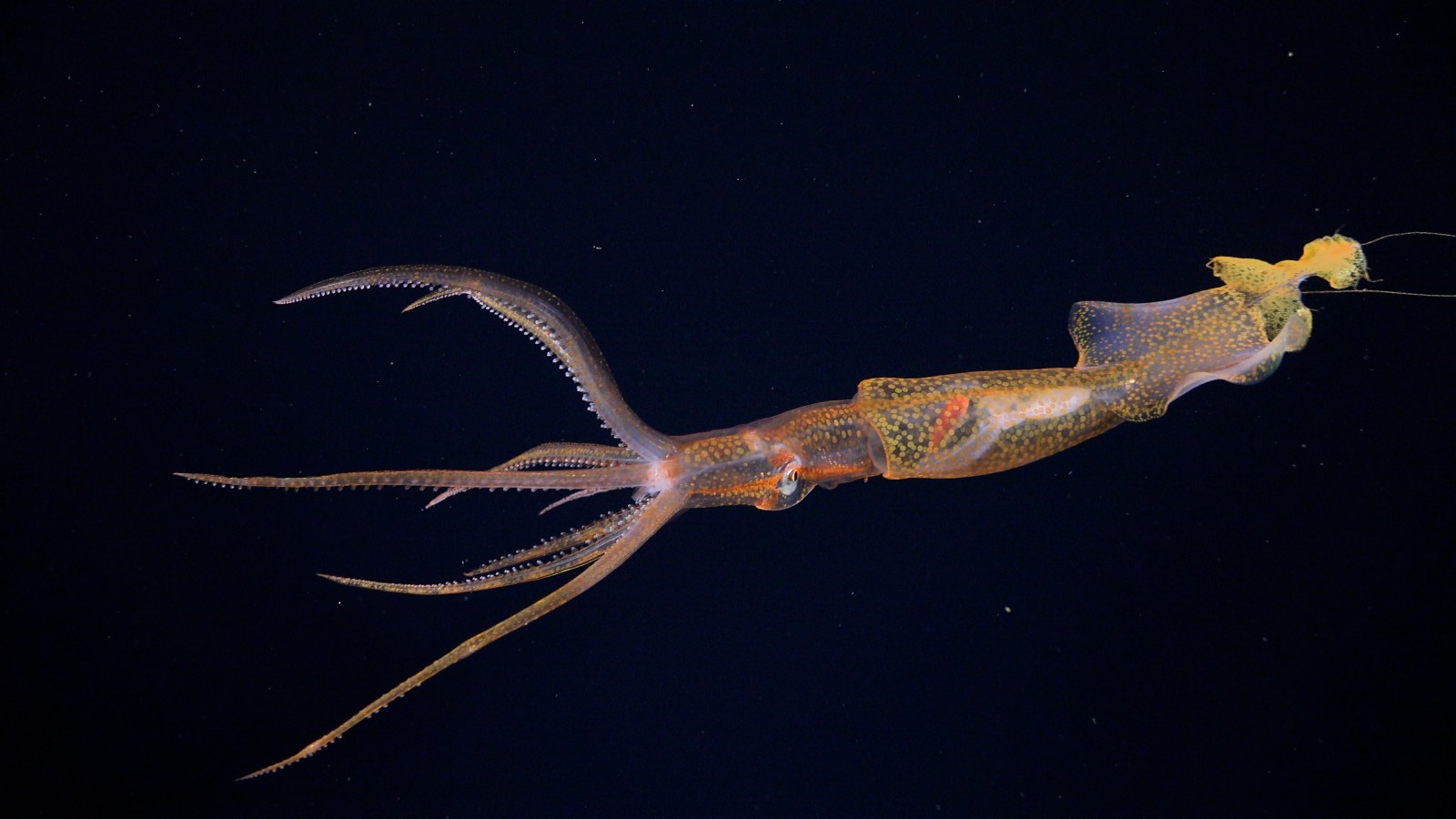Watch elusive, sucker-less squid in rare footage captured off the Galapagos
Footage of the rare squid, Grimalditeuthis bonplandi, was captured for only the 2nd time ever during an expedition to explore hydrothermal vents off the Galapagos Islands.

A research vessel off the coast of the Galapagos Islands recently spotted a rarely seen, ghostly squid with weak, sucker-less tentacles floating in the deep, marking only the second time this elusive species has ever been filmed alive.
Researchers from the Schmidt Ocean Institute, in collaboration with the Charles Darwin Foundation and Parque Nacional Galápagos, spotted the ethereal cephalopod, dubbed Grimalditeuthis bonplandi, using a remotely operated vehicle (ROV) during an expedition to hydrothermal vents.
G. bonplandi can grow up to 10 inches (25 centimeters) in length. These squid have fragile bodies and are slow swimmers. According to the Schmidt Ocean Institute, the species inhabits depths of 660 to 5,000 feet (200 to 1,500 meters). Although believed to exist worldwide, the squid are rarely encountered — until 2005, scientists had only studied dead specimens that came from the stomach contents of sperm whales (Physeter macrocephalus).
Related: What is the largest squid in the world?
Unlike other squid, G. bonplandi has feeding tentacles with no suckers. Other cephalopods whip and thrash, grabbing their prey with their tentacles and trapping them with their suckers, but G. bonplandi is thought to be a graceful feeder that undulates its tentacles to lure small shrimp and other crustaceans.
Early research collected from dead specimens made it clear that this squid lacked muscle in its tentacles. In 2005, scientists spotted the creature in the Monterey Canyon off central California and recorded its strange behavior for 22 minutes. At that time, the creature stayed still, as if stunned. Only the ends of its tentacles waved and fluttered. This behavior led scientists to speculate how the animal captures its prey. It could be mimicking the movement of a small fish or worm, luring creatures by resembling their prey — a method called aggressive mimicry, which is common in other cephalopods. However, with the limited video observations and infrequent encounters, this is uncertain.
There is still much to learn about these mysterious creatures, but ROVs have made it possible to capture illuminating footage to inform new theories until the next live sighting.
Sign up for the Live Science daily newsletter now
Get the world’s most fascinating discoveries delivered straight to your inbox.

Elise studied marine biology at the University of Portsmouth in the U.K. She has worked as a freelance journalist focusing on the aquatic realm. Elise is working with Live Science through Future Academy, a program to train future journalists on best practices in the field.









